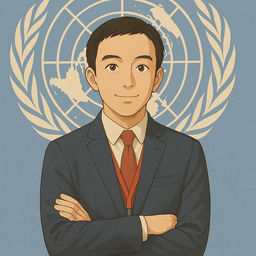Talks and presentations
The U.S. and China’s Aid Strategy in the 21st Century Africa: Competition and Division
This study investigates the dynamics of U.S. and Chinese aid strategies in 21st-century East Africa, with a particular focus on their competition and emergent division of labor. Employing a mixed-methods approach, we examine the underlying mechanisms and international relations logic governing these aid strategies to explore how each country modifies its aid agenda in response to the other’s initiatives. By developing a game model and reviewing the literature, we propose and test novel hypotheses related to sectoral balancing, normative contestation, ally protection, and efforts to split opposing coalitions. While the results confirm aid competition between the U.S. and China, our findings reveal a clear division in competition strategies: China prioritizes economic infrastructure and industrial development, while the U.S. focuses on governance, democratization, and social sectors. This division is further reflected in their high-level summit mechanisms and declarations. China’s aid, often state-driven and infrastructure-focused, aligns with its broader vision of a “community of shared destiny.” In contrast, the U.S. emphasizes governance reforms and market-oriented approaches, often delivered through NGOs and private enterprises. Despite this competition, we argue that these divergent strategies can be seen as complementary in certain respects, with China building physical foundations for growth and the U.S. focusing on improving governance for sustainable development. Therefore, this research not only enhances our understanding of contemporary aid dynamics but also offers insights into the evolving nature of U.S.-China relations and their impact on global development paradigms.
Date: 2025-04-03
Location: Chicago, IL
Whispers of Inequality: China’s Social Insurance and Labor Migration
Amidst China’s dynamic socio-economic landscape since the era of reform and opening up, the profound rural-urban disparity and its reverberations on labor migration have ascended to a position of paramount importance. Nongmingong, the Chinese migrant workers, confronts challenges propelled by social insurance discrepancies, rural-urban divides, and the household registration (Hukou) system. Employing a multifaceted approach encompassing historical retrospection, logistic analysis, and case studies, this study brings to light the nongmingong phenomenon. At its heart lies the evolution of China’s social insurance policies, steering the trajectories of nongmingong’s migration. Distinct contours of medical and pension insurance materialize, wherein medical insurance designed for rural residents curtails nongmingong’s mobility, while pension insurance effects exhibit nuanced gradients. Furthermore, this dissertation examines the government’s response in the face of nongmingong’s exit from cities, epitomized by the approach of Guangdong province. The study’s interpretive prism extends to encompass the nongmingong phenomenon through the lenses of the developmental state paradigm. The artificial dissonance in social insurance coverage surfaces as a form of inequality, with governmental reactions constituting a remedial response as nongmingong steps back from the urban labor stage.
Date: 2024-06-27
Location: London, UK
Formal versus Informal Institutional Distance Impact on Strategic Assets Seeking Foreign M&A
This study intends to probe into the influence of different specific dimensions under formal versus informal institutional distances on sub-motives of emerging-market (EM) multinational enterprises (MNEs) strategic-asset seeking (SAS), in order to gain insights into the understanding of new trend of outward foreign direct investment (OFDI) from emerging economies like China. By adopting multinomial logistic regression through accessing to both macro and firm level data, we find that EMNEs would focus more on formal rather than informal institutional distance for seeking all types of strategic assets. Simultaneous results show that with higher formal institutional distance between home and host countries, the possibility of acquiring both patents and trademarks has significantly increased. While the informal distance is solely correlated with the motive of seeking trademarks only.
Date: 2023-07-24
Location: Boston, MA
